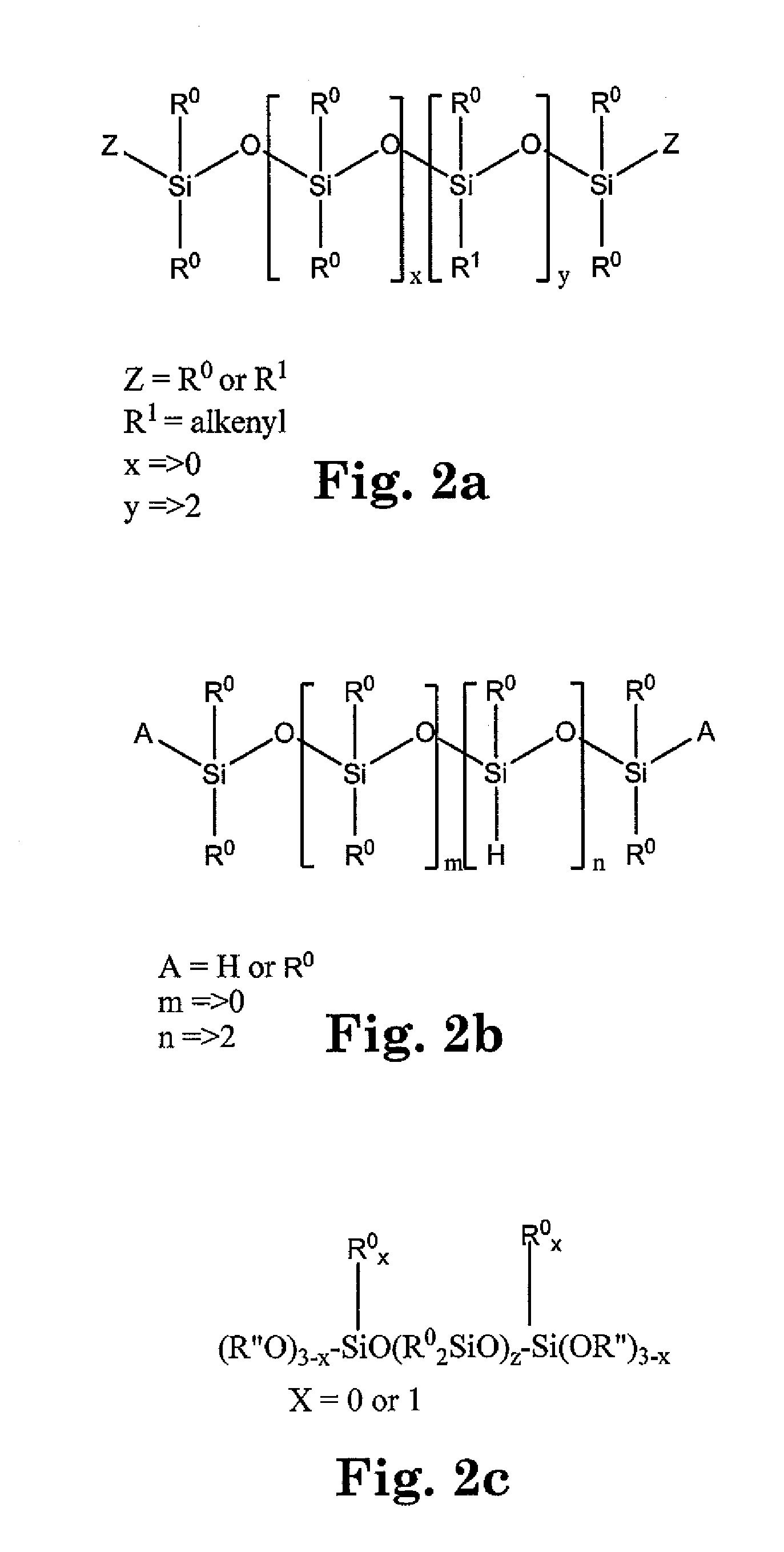Moisture resistant photovoltaic devices with elastomeric, polysiloxane protection layer
a photovoltaic device and polysiloxane technology, applied in the direction of semiconductor devices, basic electric elements, electrical equipment, etc., can solve the problems of poor adhesion of conventional barrier films to the top surface(s) of the device, the delamination stress of many conventional barriers, and the inability to meet the long-term protection needs of chalcogenide-based solar cells, etc., to achieve excellent protection against water damage
- Summary
- Abstract
- Description
- Claims
- Application Information
AI Technical Summary
Benefits of technology
Problems solved by technology
Method used
Image
Examples
example 1
[0082]This example demonstrates that depositing a high WVTR silicone elastomer over CIGS-based cells protects cell efficiency and dramatically improves cell stability in damp environments.
Cell Preparation
[0083]All cells used in this example were the same and included a metal substrate, back electrical contact, CIGS absorber, CdS buffer, TCO, and top electrical conduction grid of silver. The individual CIGS based solar cells were electrically configured by welding a 1×10 mm Sn-plated copper busbar on the right and left side of the cell which represents the positive and negative terminals of the device, respectively. The busbar material extends past the top edge of the solar cell materials by approximately 3 inches to facilitate the electrical testing and monitoring of the device. These individual CIGS based solar cells were cleaned in a 50% (vol) water:50% isopropanol alcohol (vol) solution at 25° C. by simple hand agitation for 30 seconds. This was followed by a 30 minute heating to...
example 2
[0092]The coated cells prepared in Example 1 were subjected to damp heat testing at 85° C. and 85% relative humidity (RH). Retained efficiency as a function of this exposure was evaluated. For comparison, uncoated cells also were tested.
[0093]The purpose of damp heat testing is to evaluate the ability of a sample to withstand the effect of long-term humidity exposure and penetration. The testing is carried out according to IEC 60068-2-78 (2001-08) except that the room temperature cells were introduced into the testing chamber without preconditioning. Also, the following severities were applied:
Test temperature: 85° C. + / −2° C.
Relative Humidity: 85%+ / −5%
[0094]Test duration 1107 hr
[0095]The retained efficiency as a function of exposure is shown in the following table. All tabulated values are an average of three samples unless otherwise noted. A single data point was obtained for some of the cells due to the adhesive failing which attached the busbar to the cell.
% Retained Efficiency ...
example 3
Cell Preparation
[0097]All cells used in this example were the same except for the comparison as noted below. Each cell included a metal substrate, back electrical contact, CIGS absorber, CdS buffer, TCO, and top electrical conduction grid of silver. The individual CIGS based solar cells were electrically configured by welding a 1×10 mm Sn-plated copper busbar on the right and left side of the cell which represents the positive and negative terminals of the device. The busbar material extends past the top edge of the solar cell materials by approximately 3 inches to facilitate the electrical testing and monitoring of the device. These individual CIGS based solar cells were cleaned in a 50% (vol) water:50% isopropanol alcohol (vol) solution at 25° C. by simple hand agitation for 30 seconds. This was followed by a 30 minute heating to 50° C. in an oven.
Coating Formulations
[0098]The 3-1765 Conformal Coating product from Dow Corning Corporation, Midland, Mich. was used as received.
[0099]...
PUM
 Login to View More
Login to View More Abstract
Description
Claims
Application Information
 Login to View More
Login to View More - R&D
- Intellectual Property
- Life Sciences
- Materials
- Tech Scout
- Unparalleled Data Quality
- Higher Quality Content
- 60% Fewer Hallucinations
Browse by: Latest US Patents, China's latest patents, Technical Efficacy Thesaurus, Application Domain, Technology Topic, Popular Technical Reports.
© 2025 PatSnap. All rights reserved.Legal|Privacy policy|Modern Slavery Act Transparency Statement|Sitemap|About US| Contact US: help@patsnap.com



